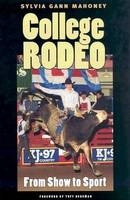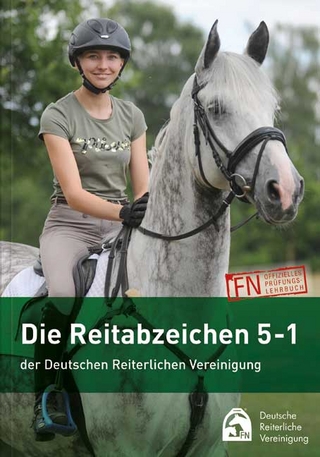
College Rodeo
From Show to Sport
Seiten
2004
Texas A & M University Press (Verlag)
978-1-58544-331-4 (ISBN)
Texas A & M University Press (Verlag)
978-1-58544-331-4 (ISBN)
- Titel z.Zt. nicht lieferbar
- Versandkostenfrei innerhalb Deutschlands
- Auch auf Rechnung
- Verfügbarkeit in der Filiale vor Ort prüfen
- Artikel merken
Rodeo, the sport of epic legends. Cowboys and cowgirls use brain and brawn to contend for prizes and placement, but more often than not, it is the prestige of honorable competition that spurs them on. This work covers the history of the sport on college campuses from the first organized contest in 1920 to the national championship of 2003.
Rodeo, the sport of epic legends. Cowboys and cowgirls use brain and brawn to contend for prizes and placement, but more often than not, it is the prestige of honorable competition that spurs them on. College Rodeo covers the history of the sport on college campuses from the first organized contest in 1920 to the national championship of 2003. In the early years of the twentieth century, a growing number of kids from farms and ranches attended college, many choosing the land grant institutions that allowed them to prepare for agricultural careers back home. They brought with them a love for the skills, challenges, and competition they had known - a taste for rodeo. The first-ever college rodeo was held in 1920 at the Agricultural and Mechanical College of Texas, as Texas A&M was then known. It offered bronco busting, goat roping, saddle racing, polo, a greased pig contest, and country music. The rodeo was a fundraising effort that grew enormously popular; by its third year, the rodeo at Texas A&M drew some fifteen hundred people. The idea spread to other campuses, and in 1939, the first intercollegiate rodeo with eleven colleges and universities competing was held at the ranch arena of an entrepreneur near Victorville, California. Since that time, college rodeo has thrived on campuses throughout the West. Sylvia Gann Mahoney now presents the first history of the sport, tracing its growth parallel to that of professional rodeo and the development of the organizational structure that today governs college rodeo. She draws on personal interviews as well as the archives of the National Intercollegiate Rodeo Association and newspaper accounts from participating schools and their hometowns. Mahoney chronicles the events, profiles winners, highlights outstanding individuals, and analyzes the organizational efforts that have contributed to the colorful history of college rodeo. She traces the changing role of women and notes their victories, which were ignored by much of the contemporary press in the early days of the sport. College Rodeo gives credit to the pioneers of college rodeo and includes rare photographs of rodeo teams, champions, and rodeo queens, blended with the true-to-life details of sweat and tears that make intercollegiate rodeo such a popular sport.
Rodeo, the sport of epic legends. Cowboys and cowgirls use brain and brawn to contend for prizes and placement, but more often than not, it is the prestige of honorable competition that spurs them on. College Rodeo covers the history of the sport on college campuses from the first organized contest in 1920 to the national championship of 2003. In the early years of the twentieth century, a growing number of kids from farms and ranches attended college, many choosing the land grant institutions that allowed them to prepare for agricultural careers back home. They brought with them a love for the skills, challenges, and competition they had known - a taste for rodeo. The first-ever college rodeo was held in 1920 at the Agricultural and Mechanical College of Texas, as Texas A&M was then known. It offered bronco busting, goat roping, saddle racing, polo, a greased pig contest, and country music. The rodeo was a fundraising effort that grew enormously popular; by its third year, the rodeo at Texas A&M drew some fifteen hundred people. The idea spread to other campuses, and in 1939, the first intercollegiate rodeo with eleven colleges and universities competing was held at the ranch arena of an entrepreneur near Victorville, California. Since that time, college rodeo has thrived on campuses throughout the West. Sylvia Gann Mahoney now presents the first history of the sport, tracing its growth parallel to that of professional rodeo and the development of the organizational structure that today governs college rodeo. She draws on personal interviews as well as the archives of the National Intercollegiate Rodeo Association and newspaper accounts from participating schools and their hometowns. Mahoney chronicles the events, profiles winners, highlights outstanding individuals, and analyzes the organizational efforts that have contributed to the colorful history of college rodeo. She traces the changing role of women and notes their victories, which were ignored by much of the contemporary press in the early days of the sport. College Rodeo gives credit to the pioneers of college rodeo and includes rare photographs of rodeo teams, champions, and rodeo queens, blended with the true-to-life details of sweat and tears that make intercollegiate rodeo such a popular sport.
Sylvia Gann Mahoney is a former college rodeo coach and a founder of the National Intercollegiate Rodeo Association Alumni. She lives in Vernon, Texas.
| Erscheint lt. Verlag | 31.5.2004 |
|---|---|
| Vorwort | Tuff Hedeman |
| Zusatzinfo | 60 b&w photographs, 8 appendices, index |
| Verlagsort | College Station |
| Sprache | englisch |
| Themenwelt | Sachbuch/Ratgeber ► Sport ► Reiten / Pferde |
| ISBN-10 | 1-58544-331-X / 158544331X |
| ISBN-13 | 978-1-58544-331-4 / 9781585443314 |
| Zustand | Neuware |
| Haben Sie eine Frage zum Produkt? |
Mehr entdecken
aus dem Bereich
aus dem Bereich
selbst Verspannungen lösen und Wohlbefinden steigern
Buch | Softcover (2024)
Kosmos (Verlag)
20,00 €
Neuausgabe 2022 - Ein besonderes Geschenk für erwachsene Pferde-Fans
Buch | Softcover (2022)
Piper (Verlag)
16,00 €
Buch | Softcover (2020)
FN Verlag
17,90 €


